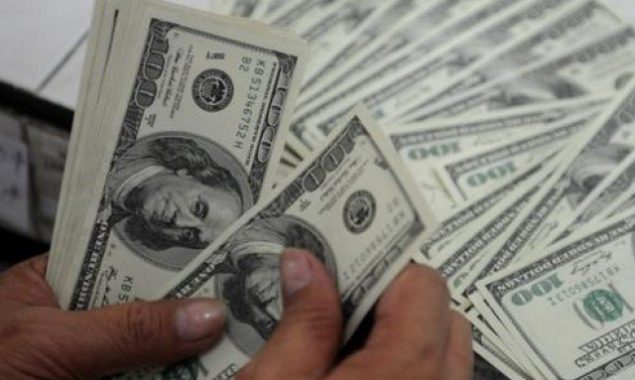
Pakistan raises $1 billion through Sukook Bonds at record interest
Pakistan raised a $1 billion loan through the Sukuk bond on Monday at a 7.95 percent interest rate, the highest rate the country has consented to pay on an Islamic bond in its history.
After spending roughly $2 billion of the $3 billion borrowed from Saudi Arabia one and a half months ago, the administration turned to foreign capital markets. As of January 14, the gross official foreign exchange reserves were $17 billion.
The Ministry of Finance announced to BOL News that Pakistan has issued a 7-year tenor asset-backed Sukuk bond to raise $1 billion at a 7.95 percent interest rate.
The main distinction between an Islamic Sukuk and a standard Eurobond is that the Islamic bond is backed by a lower-yielding asset. However, the government has paid a greater interest rate on an asset-backed bond than on a regular tenor bond.
In exchange for the loan, Pakistan has agreed to pledge a piece of the Lahore-Islamabad motorway (M2), a national asset developed in the 1990s that is currently utilised to raise debt from international capital markets.
However, officials from the Ministry of Finance stated that a roughly 8% interest rate should be viewed in the context of a global rise in interest costs following the announcement by the US Federal Reserve to raise interest rates beginning in March.
According to ministry officials, the country needed to increase the loan to maintain official foreign exchange reserves ahead of several big foreign debt repayments.
At the given prices, the Ministry of Finance received offers totaling more over $3 billion. Bloomberg first informed its investors that the Pakistani government had set the benchmark rate at 8.25 percent to 8.375 percent. However, the government was able to reach an agreement at a reduced interest rate of approximately 8%.
In fiscal year 2017, Pakistan borrowed $1 billion for five years using Sukuk at a 5.625 percent interest rate, which was 5% higher than the benchmark five-year US paper at the time.
The interest rate is approximately 8%, which is not only much higher than the previous Islamic bond sale, but also nearly 6.3 percent more than the seven-year US benchmark rate.
It is the highest rate Pakistan has ever paid on an Islamic bond in its history, indicating the country’s desperation since it has long built its official foreign exchange reserves by obtaining pricey foreign loans.
Pakistan took a $3 billion Saudi loan on very tight terms last month after its declared total foreign exchange reserves fell below $16 billion. However, reserves declined slightly more than $17 billion again as of January 14, showing that the government had already consumed nearly $2 billion in Saudi borrowing.
The current account deficit increased to $9.1 billion in the first half of the current fiscal year, practically matching the level forecast by State Bank Governor Dr Reza Baqir for the entire fiscal year.
Dr. Baqir told a group of journalists in August last year that the current account deficit will stay in the range of $6.5 billion to $9.5 billion in the current fiscal year 2021-22. However, the criterion is practically reached six months before the fiscal year ends.
The SBP is also taking a risk by offering 7% interest on loans raised by Pakistan through Roshan Digital Accounts. The government is also utilising over $5 billion in private foreign exchange reserves held by citizens in commercial banks at near-zero cost. However, it has incurred a cost of approximately 8% to foreigners in the form of interest on Sukuk and 7% on Roshan Digital Account.
Long-term bonds are considered the preferred choice of instrument over short-term expensive commercial borrowing because of their longer maturity and lack of limitations. However, the interest rates that the PTI government is providing foreign investors are unmatched in the country’s history.
The government is performing the capital market transaction for the second time this fiscal year. It had previously raised $1 billion in July of last year.
During the current fiscal year, the government has set a borrowing target of $3.5 billion through the issuing of international Euro and Sukuk bonds.
The government chose to test global markets just four days before the International Monetary Fund’s executive board meeting, which would assess Pakistan’s request to restart the halted programme and consider approving the $1 billion next loan tranche.
Due to its inability to meet the agreed-upon requirements, the government has so far been able to obtain only $2 billion of the IMF package out of a total of $6 billion. So far, one of the two major conditions stipulated for loan approval remains partially implemented, namely the passage of the SBP amendment bill. The SBP bill has yet to be ratified by the Senate.
The government is significantly reliant on external borrowings to cover its financing needs and maintain a minimum level of gross official foreign exchange reserves. Despite claims of increased exports, earnings are insufficient to cover the rising import cost.
Foreign direct investment has also remained below $2 billion each year, despite the PTI replacing multiple Chairmen of the Board of Investment in the last three and a half years.
Pakistan’s foreign exchange reserves are currently sufficient for 10 weeks of import cover, despite a jump in the import bill, which has averaged $7.8 billion over the last two months. Despite the SBP offering abnormally high interest rates to expatriate Pakistanis investing in government assets, reserves remain low.
The rupee is currently losing value versus the US currency, trading at roughly Rs176 per dollar.
Read More News On
Catch all the Business News, Breaking News Event and Latest News Updates on The BOL News
Download The BOL News App to get the Daily News Update & Follow us on Google News.




